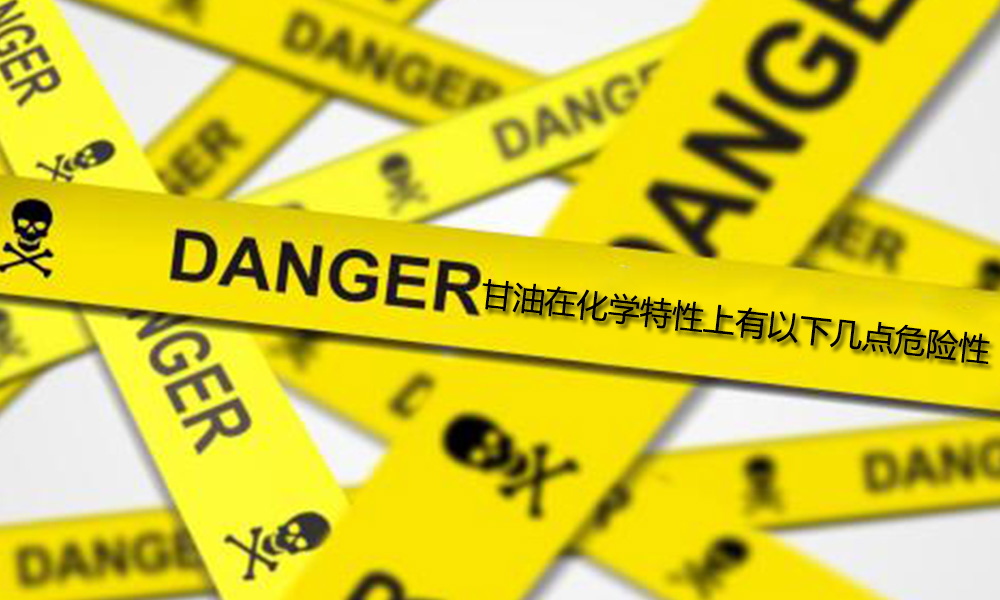
Glycerin (glycerol) is normally a colorless , odorless, sweet, clear and viscous liquid organic matter in appearance. Glycerol is insoluble in benzene, chloroform, carbon tetrachloride, carbon disulfide, petroleum ether and oils.
The chemical properties of glycerin have the following dangers that you must be aware of, otherwise the consequences will be serious:
Glycerin will polymerize when the temperature is around 150°C. Incompatible with anhydrous acetic anhydride, potassium permanganate, strong acids, corrosives, fatty amines, isocyanates, and oxidants. It may explode if mixed with strong oxidants (such as chromium trichloride, potassium chlorate, potassium permanganate);
The reaction rate is slow in dilute solutions. There are several oxidation products produced;
When exposed to light or in contact with basic bismuth nitrate and zinc oxide, glycerol turns black;
If iron contaminants are mixed in, the mixture containing phenol, salicylic acid, and danilinic acid will turn black;
Glycerol forms a boric acid complex (glycerol boric acid), which is more acidic than boric acid;
Health hazards: Toxic to humans if consumed . Harmful if inhaled, ingested or absorbed through the skin. Irritating to eyes and skin. Prolonged exposure can cause headache, nausea and vomiting;
Oral toxicity in mice LD50=31,500mg/kg. Intravenous administration LD50=7,560mg/kg;
Explosion hazard: This product is flammable and irritating;
Hazardous characteristics : Combustible in case of open flame or high heat.

 微信扫一扫打赏
微信扫一扫打赏

